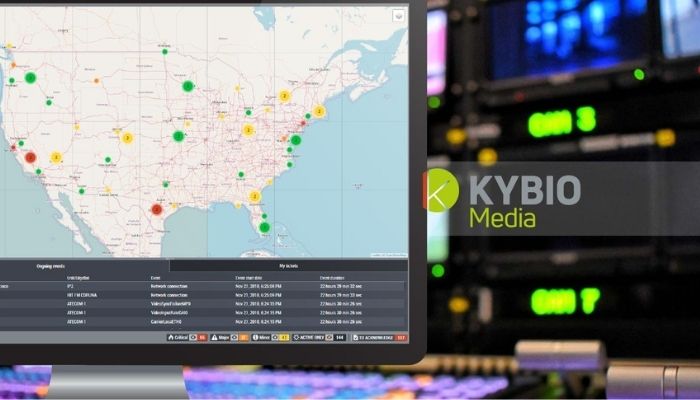Nicolas Boulay, Co-President
WorldCast CONNECT
There are few broadcast challenges as critical as live sports. With global audiences in the tens of millions and upwards for many events, all of whom are expecting to see high-quality live video on a variety of platforms, it is vitally important to ensure that all equipment in the chain is functioning at an optimum level at all times.
The reputational and economic consequences of failure are severe, which is why sports broadcasting is the crucible in which all other broadcast equipment is tested. Diversity and multiple redundancy paths are taken as granted, with the infrastructures established to handle the transmission of the major, week-long events that occur every few years reaching impressive sizes and scales. Cable paths are often taken in two directions, east and west; in case of seismic activity disrupting a signal, satellite redundancy is introduced; and the system is stress-tested to ensure that nothing can take it down.
This must occur over a long period of time. A major tournament can take four weeks to play out, but the testing and establishment of the network at least doubles that. And for sporting properties that are effectively global series, the situation is an ongoing one that can take up a good proportion of the year.

There have been several important changes in recent years that have raised the criticality of effective monitoring and managing of these networks.
The industry has embraced IP technologies. IP networks are increasingly used in all parts of the broadcast value chain, from acquisition through production and onto distribution.
This transition has been accelerated by the introduction of remote production workflows that see tasks that would once have been accomplished on-site using OB trucks occurring back at base in newly constructed production hubs. The pandemic has dramatically accelerated the introduction of these techniques at the top-tier level.
Sports are no longer delivered simply to a broadcast network. Viewers watch on multiple devices on multiple platforms in linear or non-linear mode.
The new workflows that are being established to serve this evolving picture are very different from before. An event can take place in one country and, effectively, only the camera and audio equipment and their crews can be considered to be on site. All mixing, graphics, replays and more take place in a remote hub. This can even involve roundtrips to third-party specialist providers of such recent innovations as AR overlays, while commentary teams have become habitually home-based as a result of the pandemic.
Effective monitoring of these networks is crucial for success, offering predictive intervention, identifying points of potential failure before they break, while also offering the key benefits of maximizing equipment uptime—an important consideration given the global nature of sport and its audience.
We worked recently with a major rights holder to provide a KYBIO Network Monitoring System (NMS) that perfectly encapsulates the new workflows that must be accommodated.
The rights holder also operates as host broadcaster, splitting its operation between a Master Control Room in a centralised location and a peripatetic broadcast centre that follows the organisation’s events across four continents. Despite this remote workflow, the NMS has been carefully set up to provide a single central reporting view of status and ticketing of the organisation’s operations, delivering real-time monitoring of local and remote devices in the MCR chain.

Customised templates have been established for reporting and ticketing, ensuring any problems are dealt with swiftly and efficiently, while KYBIO has also been configured to provide direct control of main and back-up switching with one click from the centralised interface. Lastly, the UI can be viewed from anywhere, providing the organisation with increased flexibility when it comes to deploying remote operations.
This last point is crucial. If there is anything the last two years have taught the industry it is that it is astonishingly resilient precisely because it can respond to rapid and extensive change. The workflows that dominated sports and live events for decades have all but been swept away by the pandemic, leaving the monitoring and management of the new workflows and ecosystems that are taking their place of critical importance.
More to the point, it would be unwise to think that change is about to slow down anytime soon, and any NMS chosen to safeguard the delivery of high-quality, low-latency sports content on a worldwide basis must be as flexible as it is scalable to ensure proper futureproofing.
Below, the PDF printable version of “The importance of monitoring networks in live sports”.

KYBIO is a vendor-agnostic, centralized network management system (NMS) that empowers businesses with a simpler, more efficient platform to monitor their IP infrastructure.
Powerful and scalable, Kybio unifies the monitoring of all connected devices across one or multiple sites, and offers a unique combination of modules. Across a single web interface, users benefit from real-time supervision along with multiple management and control modules such as a built-in ticket & incident tracking platform tied to a powerful analytics & reporting engine.